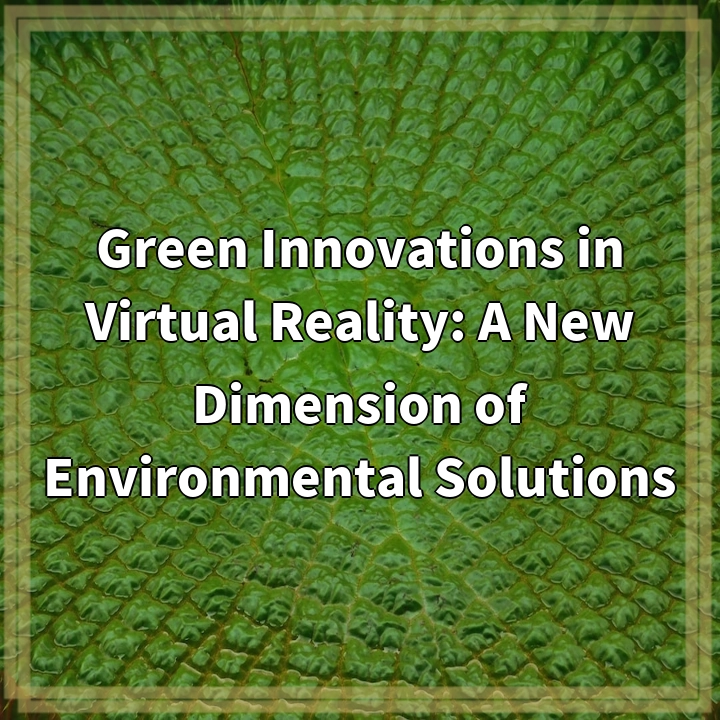
What it is:
Virtual Reality (VR) is a technology that creates a simulated environment in which users can interact and immerse themselves in a virtual world. Recent advancements in VR have opened up new possibilities for tackling environmental challenges in innovative ways. Green Innovations in Virtual Reality refer to the use of VR technology in the pursuit of sustainable and eco-friendly solutions.
Real-world Problems:
The integration of VR in environmental solutions comes with its own set of challenges and considerations. Here are some of the key real-world problems associated with Green Innovations in Virtual Reality:
1. Energy Consumption:
The energy required to power VR devices can be significant, which contributes to carbon emissions and environmental impact. Finding ways to mitigate the energy consumption of VR technology is crucial to ensure that the overall environmental benefits outweigh the costs.
2. E-Waste:
As VR technology evolves and becomes more accessible, the issue of electronic waste, or e-waste, becomes a concern. The disposal and recycling of VR devices, which contain various components and materials, need to be managed properly to minimize environmental harm.
3. Ethical Mining of Resources:
The production of VR devices involves the extraction of natural resources such as minerals and metals. Ensuring ethical mining practices and responsible sourcing of materials is essential to prevent environmental degradation and human rights violations associated with resource extraction.
4. Limitations of Virtual Reality:
Virtual Reality is a powerful tool, but it has its limitations. The challenge lies in accurately representing the complexity of real-world environmental issues in a virtual environment. Ensuring that VR solutions are aligned with real-world scenarios and provide valuable insights is crucial for their effectiveness in addressing environmental challenges.
By acknowledging and addressing these real-world problems associated with Green Innovations in Virtual Reality, we can strive to maximize the potential of this technology to contribute to a more sustainable and eco-friendly future.

Solutions for Green Innovations in Virtual Reality:
To overcome the real-world problems associated with Green Innovations in Virtual Reality, several solutions can be implemented. These solutions aim to minimize the environmental impact of VR technology while maximizing its potential to address environmental challenges:
1. Energy-Efficient VR Devices:
Developing and promoting energy-efficient VR devices can help reduce the energy consumption associated with virtual reality technology. Manufacturers can optimize hardware and software components to minimize power requirements without compromising the user experience. Additionally, exploring renewable energy sources to power VR devices can further reduce carbon emissions.
2. Recycling Programs:
Establishing proper recycling programs for VR devices can minimize e-waste. Manufacturers and retailers can take responsibility for collecting and recycling old VR devices, ensuring that valuable components are reused or properly disposed of. Educating users about the importance of recycling and providing convenient drop-off locations can encourage responsible disposal.
3. Responsible Material Sourcing:
Ensuring ethical mining practices and responsible material sourcing is crucial for reducing the environmental impact of VR devices. Manufacturers should prioritize suppliers that adhere to sustainable and ethical standards in extracting minerals and metals for VR technology. Additionally, exploring alternative materials and promoting circular economy principles can help minimize resource extraction.
4. Collaboration with Environmental Experts:
To overcome the limitations of VR technology, collaboration with environmental experts is essential. By involving scientists, researchers, and environmentalists in the development and implementation of VR solutions, the virtual environments can better reflect real-world complexities and contribute to more accurate analysis and decision-making.
By implementing these solutions, Green Innovations in Virtual Reality can become more sustainable and effective in addressing environmental challenges. These steps can help ensure that the potential benefits of VR technology in the environmental sector are maximized while minimizing its negative impact on the planet.















